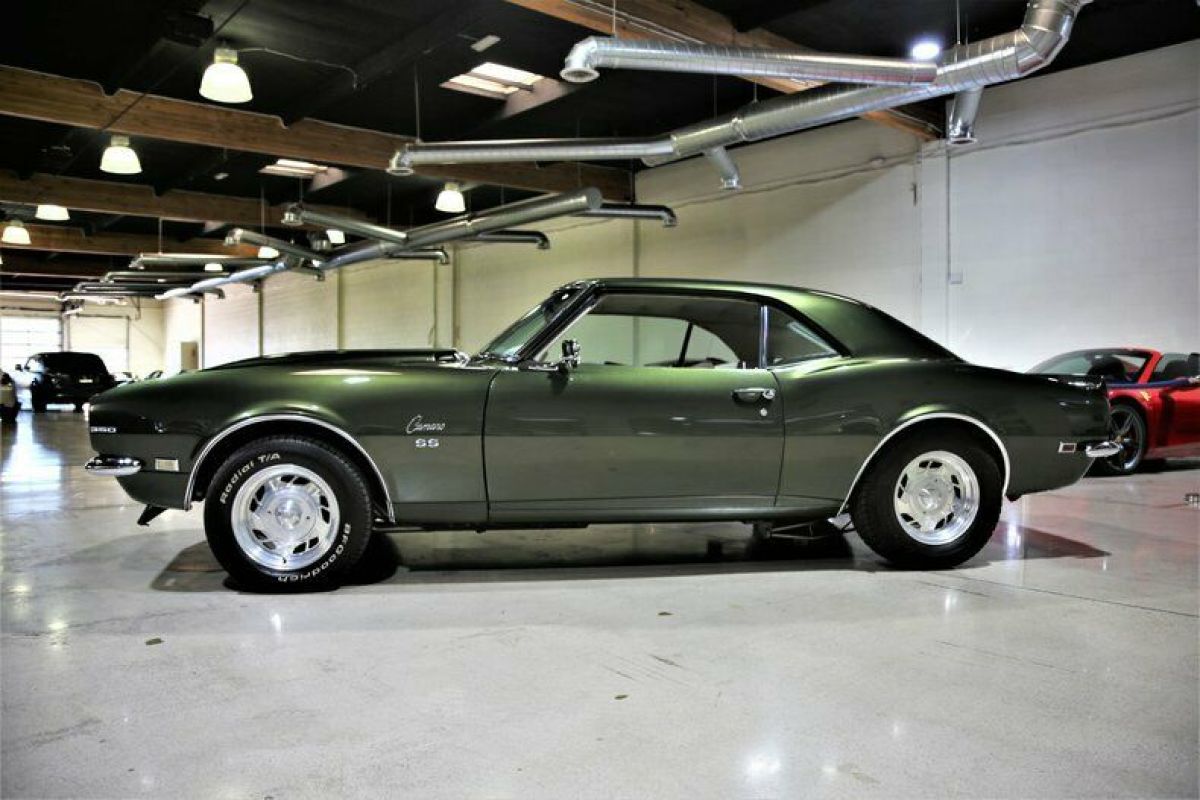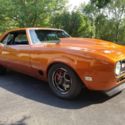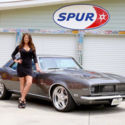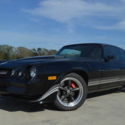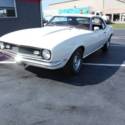1968 Camaro - 350 V8, Turbo 350 Automatic, Fresh Rebuild, A/C, Wilwood Brakes!
| Make: | Chevrolet |
| Model: | Camaro |
| Doors: | 5 |
| Year: | 1968 |
| Mileage: | 4484 |
| VIN: | 124378L305478 |
| Color: | Green |
| Engine: | 350 V8 |
| Transmission: | Automatic |
| Interior color: | Tan |
| Vehicle Title: | Clear |
1968 Chevrolet Camaro Additional Info:
Fusion Luxury Motors | eBay Template- Year: 1968
- Mileage: 4484
- Primary color: Green
- Transmission type: Automatic
- Engine: 350 V8
This 68 Camaro has been throughly gone through mechnically and boasts receipts for all of the recent work done. The 350 CI V8 has been freshly rebuilt and bored over 0.30 and is extremely strong and healthy. Virtually every element of the car has been gone through.
- 350 CI V8 - 400 HP - Rebuilt 300 Miles Ago
- New Edelbrock 650 Carb
- Turbo 350 Automatic
- Camel Back Heads
- Flat Top Pistons
- Solid Camshaft
- 12 Bolt rear-end with 3.55 Gears
- Factory Air Conditioning
- Custom Gauges
- Ladder Bar Suspension
- Wilwood Disc Brakes
- Aluminum Radiator
- Rebuilt Steering Box
- Custom Paint and Tweed Interior
- Centerline Wheels
- Custom Sound System
This Camaro is an excellent value and a very sharp and strong running classic.
Great lease rates and Financing also available on any of our inventory!
Buy Sell Trade Consignments Welcome!
Please email concierge@fusionluxurymotors.com or call 1-818-773-8181
About the Camaro:
The Camaro has been manufactured as a pony car and went on sale on September 29, 1966, for the 1967 model year and was designed as a competing model to the Ford Mustang. The car shared its platform and major components with the Pontiac Firebird, also introduced for 1967.
Four distinct generations of the Camaro were developed before production ended in 2002. The nameplate was revived on a concept car that evolved into the fifth-generation Camaro; production started on March 16, 2009.
Before any official announcement, reports began running during April 1965 within the automotive press that Chevrolet was preparing a competitor to the Ford Mustang, code-named Panther. On June 21, 1966, around 200 automotive journalists received a telegram from General Motors stating, "...please save noon of June 28 for important SEPAW meeting. Hope you can be on hand to help scratch a cat. Details will follow...(signed) John L. Cutter Chevrolet public relations SEPAW secretary."
On June 28, 1966, General Motors held a live press conference in Detroit's Statler-Hilton Hotel. It was the first time that 14 cities were connected in real time for a press conference via telephone lines. Chevrolet general manager Pete Estes started the news conference stating that all attendees of the conference were charter members of the Society for the Elimination of Panthers from the Automotive World and that this would be the first and last meeting of SEPAW. Estes then announced a new car line, project designation XP-836, with a name that Chevrolet chose in keeping with other car names beginning with the letter C such as the Corvair, Chevelle, Chevy II, and Corvette.
He claimed the name, suggests the comradeship of good friends as a personal car should be to its owner and that to us, the name means just what we think the car will do... go. The Camaro name was then unveiled. Automotive press asked Chevrolet product managers, what is a Camaro? and were told it was a small, vicious animal that eats Mustangs.
The Camaro was first shown at a press preview in Detroit on September 12, 1966, and later in Los Angeles, on September 19, 1966. Public introduction of the new model was on September 26, 1966. The Camaro officially went on sale in dealerships on September 29, 1966, for the 1967 model year.
The first-generation Camaro debuted in September 1966, for the 1967 model year, up to 1969 on a new rear-wheel drive GM F-body platform and was available as a two-door coup or convertible with 2+2 seating, and a choice of 230 cu i, 250 cu in inline-6 or 302 cu in, 307 cu in, 327 cu i, 350 cu in, and 396 cu in V8 powerplants. Concerned with the runaway success of the Ford Mustang, Chevrolet executives realized that their compact sporty car, the Corvair, would not be able to generate the sales volume of the Mustang due to its rear-engine design, as well as declining sales, partly due to the negative publicity from Ralph Nader's book, Unsafe at Any Speed. Therefore, the Camaro was touted as having the same conventional rear-drive, front-engine configuration as the Mustang and Chevy II Nova. In addition, the Camaro was designed to fit a variety of power plants in the engine bay. The first-generation Camaro lasted until the 1969 model year and eventually inspired the design of the new retro fifth-generation Camaro.
The first-generation offered a standard, Super Sport, and Rally Sport editions. In 1967, the Z/28 model was added featuring stripes on the hood and trunk, styled rally road wheels, and a 302 cu in V8 engine. In the Rally Sport edition it was more the style of the car itself. Placed with the hideaway headlights, wing windows, and the more rounded out rear fender. Once they brought out the 1968 year they introduced the use of side marker lights.
With the 1969 Camaro they did not have the wing windows as placed on the 1967 as well as having a more flat drawn out rear fender.
- 20837 Nordhoff St,
Chatsworth, CA, 91311, US - (818) 773-8181
- concierge@fusionluxurymotors.com
- www.fusionluxurymotors.com
- View our other auctions
- Email to friend









